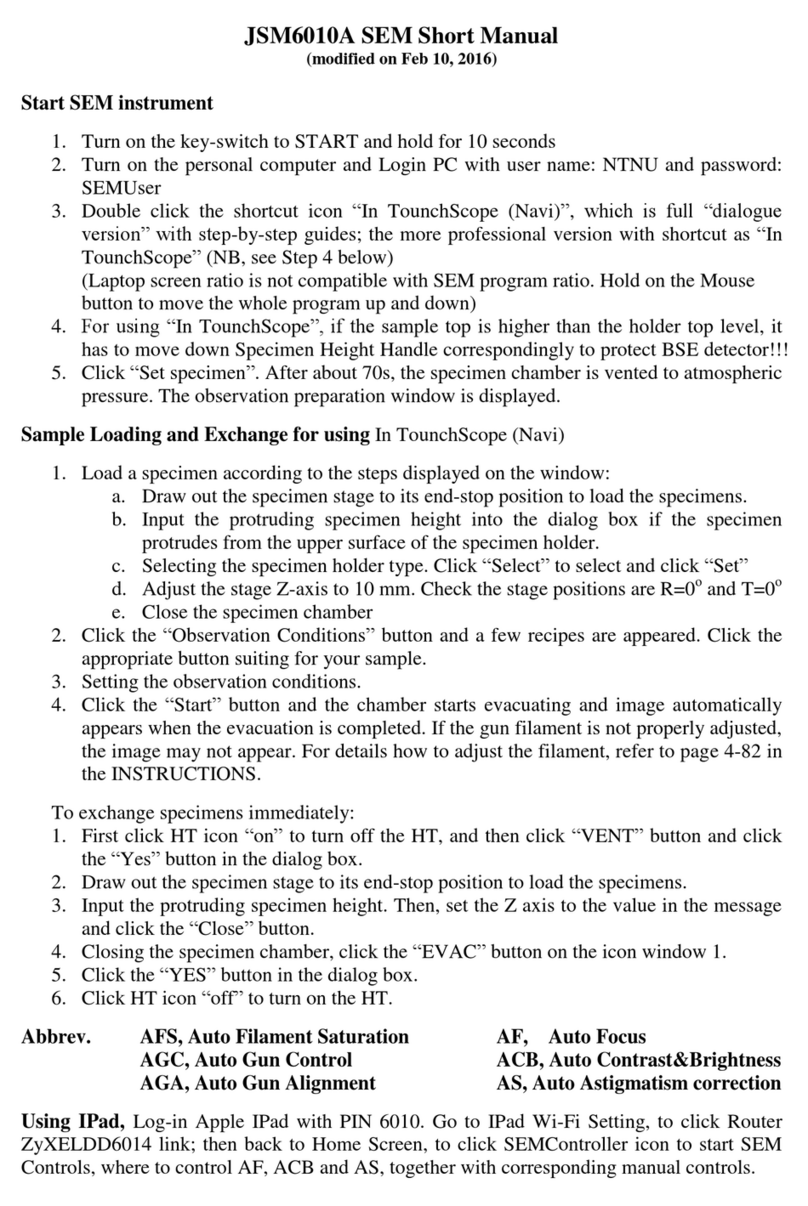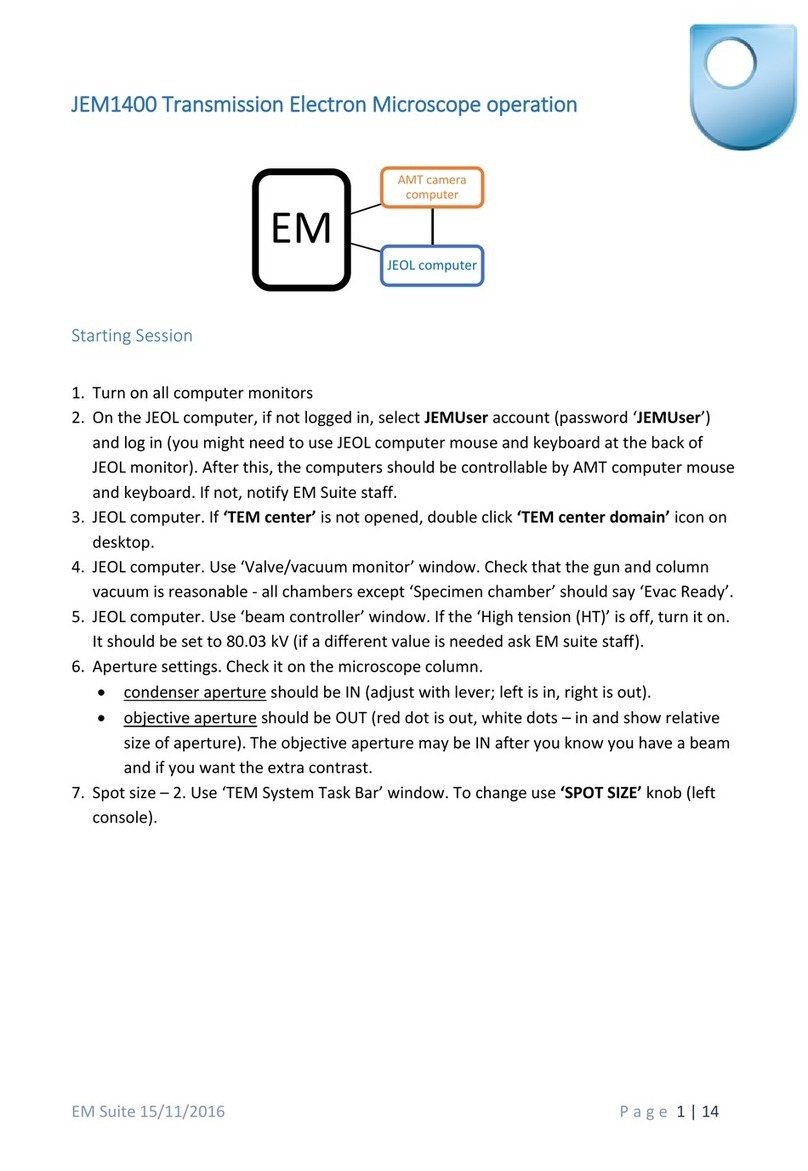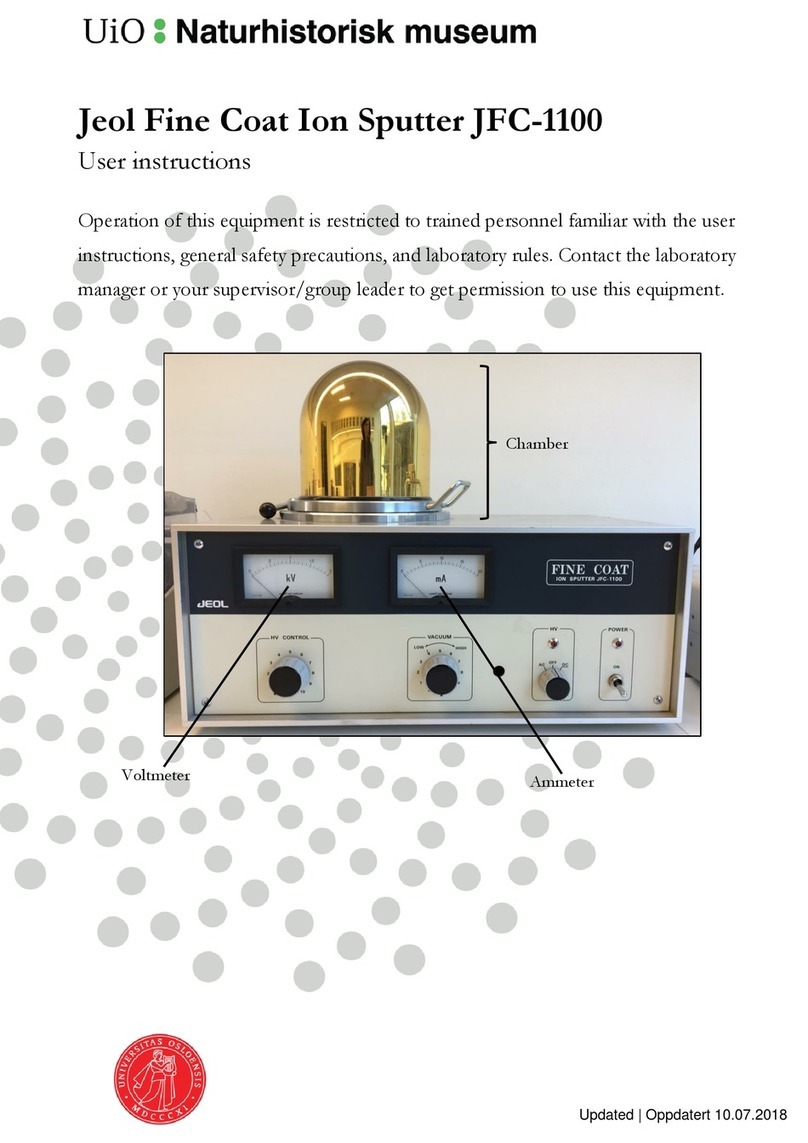
NOTICE
• This instrument generates, uses, and can radiate the energy of radio frequency and, if not installed and used in
accordance with the instruction manual, may cause harmful interference to the environment, especially radio
communications.
• The following actions must be avoided without prior written permission from JEOL Ltd. or its subsidiary company
responsible for the subject (hereinafter referred to as "JEOL"): modifying the instrument; attaching products other than
those supplied by JEOL; repairing the instrument, components and parts that have failed, such as replacing pipes in the
cooling water system, without consulting your JEOL service office; and adjusting the specified parts that only field
service technicians employed or authorized by JEOL are allowed to adjust, such as bolts or regulators which need to be
tightened with appropriate torque. Doing any of the above might result in instrument failure and/or a serious accident. If
any such modification, attachment, replacement or adjustment is made, all the stipulated warranties and preventative
maintenances and/or services contracted by JEOL or its affiliated company or authorized representative will be void.
• Replacement parts for maintenance of the instrument functionality and performance are retained and available for seven
years from the date of installation. Thereafter, some of those parts may be available for a certain period of time, and in
this case, an extra service charge may be applied for servicing with those parts. Please contact your JEOL service office
for details before the period of retention has passed.
• In order to ensure safety in the use of this instrument, the customer is advised to attend to daily maintenance and
inspection. In addition, JEOL strongly recommends that the customer have the instrument thoroughly checked up by
field service technicians employed or authorized by JEOL, on the occasion of replacement of expendable parts, or at the
proper time and interval for preventative maintenance of the instrument. Please note that JEOL will not be held
responsible for any instrument failure and/or serious accident occurred with the instrument inappropriately controlled or
managed for the maintenance.
• After installation or delivery of the instrument, if the instrument is required for the relocation whether it is within the
facility, transportation, resale whether it is involved with the relocation, or disposition, please be sure to contact your
JEOL service office. If the instrument is disassembled, moved or transported without the supervision of the personnel
authorized by JEOL, JEOL will not be held responsible for any loss, damage, accident or problem with the instrument.
Operating the improperly installed instrument might cause accidents such as water leakage, fire, and electric shock.
• The information described in this manual, and the specifications and contents of the software described in this manual
are subject to change without prior notice due to the ongoing improvements made in the instrument.
• Every effort has been made to ensure that the contents of this instruction manual provide all necessary information on
the basic operation of the instrument and are correct. However, if you find any missing information or errors on the
information described in this manual, please advise it to your JEOL service office.
• In no event shall JEOL be liable for any direct, indirect, special, incidental or consequential damages, or any other
damages of any kind, including but not limited to loss of use, loss of profits, or loss of data arising out of or in any way
connected with the use of the information contained in this manual or the software described in this manual. Some
countries do not allow the exclusion or limitation of incidental or consequential damages, so the above may not apply to you.
• This manual and the software described in this manual are copyrighted, all rights reserved by JEOL and/or third-party
licensors. Except as stated herein, none of the materials may be copied, reproduced, distributed, republished, displayed,
posted or transmitted in any form or by any means, including, but not limited to, electronic, mechanical, photocopying,
recording, or otherwise, without the prior written permission of JEOL or the respective copyright owner.
• When this manual or the software described in this manual is furnished under a license agreement, it may only be used
or copied in accordance with the terms of such license agreement.
©Copyright 2009,2010 JEOL Ltd.
• In some cases, this instrument, the software, and the instruction manual are controlled under the “Foreign Exchange and
Foreign Trade Control Law” of Japan in compliance with international security export control. If you intend to export
any of these items, please consult JEOL. Procedures are required to obtain the export license from Japan’s government.
TRADEMARK
• Windows is a trademark of Microsoft Corporation.
• All other company and product names are trademarks or registered trademarks of their respective companies.
MANUFACTURER
JEOL Ltd. 1-2, Musashino 3-chome, Akishima, Tokyo 196-8558 Japan
Telephone: 81-42-543-1111 Facsimile: 81-42-546-3353 URL: http://www.jeol.co.jp/
Note: For servicing and inquiries, please contact your JEOL service office.






























